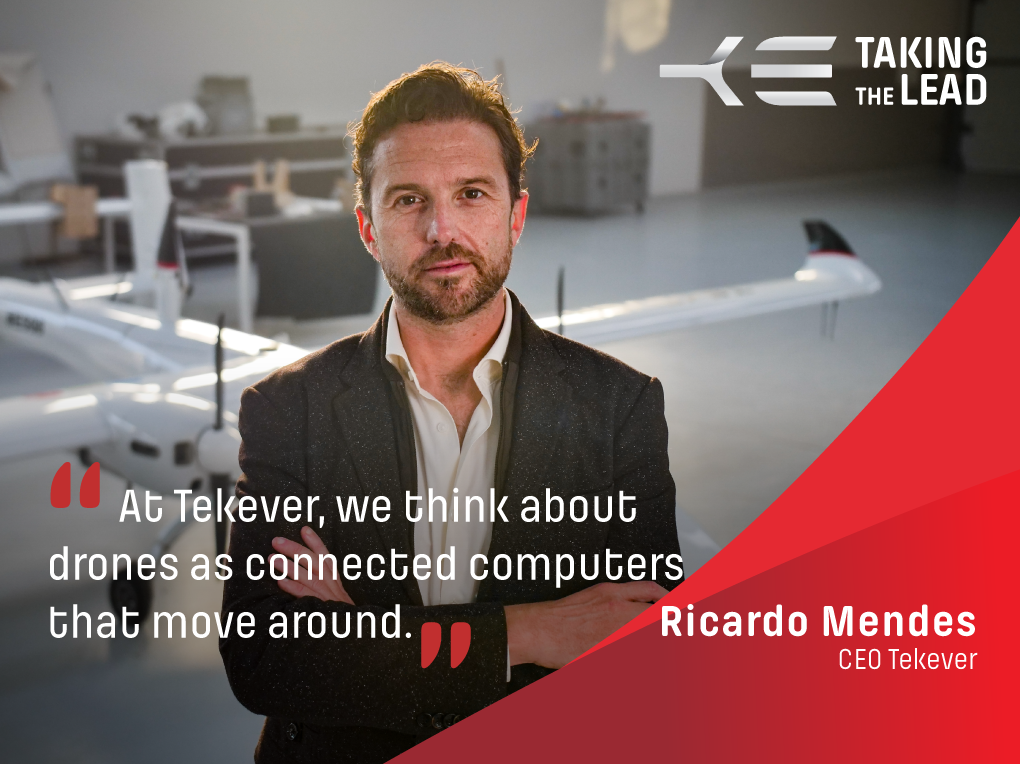With such a wide space, how do we organize our thoughts around drones? And in the context of an event focused on counter-terrorism, how do we think about them?
At TEKEVER, we think about drones as connected computers that move around, so our first, wider classification, is to look at drones according to why they move around. We divide them into three categories: the ones that focus on logistics of information – bringing information from point A to point B; the ones focused on logistics of things – moving things from point A to point B; and the ones focused on logistics of people – bringing people from point A to point B. Within each of these categories, there are countless ways drones can be used, for good or bad, and we already have a tremendous number of practical examples today.
For the sake of time, because I only have five minutes, let’s focus on logistics of information.
TEKEVER’s main business today is to help our customers know and understand what is going on in a certain area. We work primarily for governments and inter-governmental organizations to provide them with information systems, that use drones to gather tremendous amounts of data from the field, and use AI onboard and on the ground to help make sense of it all. Many of the missions we work on are precisely related to preventing and countering terrorism, both at sea and over land.
We work, for example, for the Nigerian government, flying our AR3 drones from ships to survey the waters and prevent piracy.
We work very closely with the British government and use our drones to watch over the channel every day and help prevent smuggling activities by being able to gather undisputable proof that can be used in courts of law to convict smugglers.
We work with the European Maritime Safety Agency all over the European seas to help Coast Guards and other maritime authorities fight all the illegal activities happening at sea and near our shores, ranging from smuggling, to illegal fishing, to polluting our waters and endangering our marine species.
But we also work closely with Energy companies to help keep their infrastructure safe. Our systems are today surveying hundreds of miles of oil pipelines in Africa to help prevent terrorists from damaging them and smugglers from stealing oil and creating illegal refineries, that can economically support illegal activities. Actually, we’ve just signed our first contract to start doing the same here, in North America.
From a technology point of view, things are evolving really fast. And more so after the war in Ukraine started. Drone technology doesn’t evolve at the speed we’re used to seeing aerospace technology evolve. It evolves at the speed we’re used to seeing computing and the internet evolve. Actually, companies like us that are today at the forefront of drone technology, aren’t traditional aerospace companies. We’re companies focused primarily on computing, on software and on AI; we’re used to development cycles that take weeks – not years -; and we’re obsessed about constantly listening to our customers and adapting our products to the changing environment they’re operating in.
Never has this been clearer than on what’s going on in Ukraine right now, and it will have a tremendous impact on how drone technology is built, procured and adopted in the years to come. Governments and inter-governmental organizations will no longer afford the luxury of buying systems that can effectively support their missions for several years, which is what traditional public procurement processes are designed to do, and what traditional aerospace and defense companies are used to supply.
The relationship between public organizations and the companies providing drone systems will need to be fundamentally different – focused on the mission, not the assets. This was the shift we saw happening in software and computing in the last decades: we don’t buy it anymore, we use it, we subscribe to it, and we expect it to constantly evolve, giving us more features and becoming more efficient every day. This is precisely why we’ve created an “as-a-service” model for our systems, where our customers just need to focus on their mission and leave everything else, including operation and constant technology development, to us. Providing this flexibility is, in our opinion, one of the fundamental roles of the private sector. And it is critical to allow public organizations to stay ahead of the technology adoption curve.
So, to wrap it up, we need to be very aware that:
First, drones will be everywhere, transporting information, things and people. We already have thousands of different examples, and we’ll have infinite more in the years to come;
Second, drone technology, like computing, evolves at a very fast pace and is widely accessible. We won’t be able to stop it and regulations won’t be able to fully contain its bad usage;
Third, to prevent and counter terrorism, our only option is to go faster. To create partnership models between the public and the private sectors that are focused on the mission, and that are designed to support constant evolution.
We’re still at the dawn of drones. We can stay ahead of the curve if we understand where we are, and if we take the right steps to where we need to be.
* Ricardo Mendes’ speech during the United Nations’ Counter-Terrorism Week in 2023


